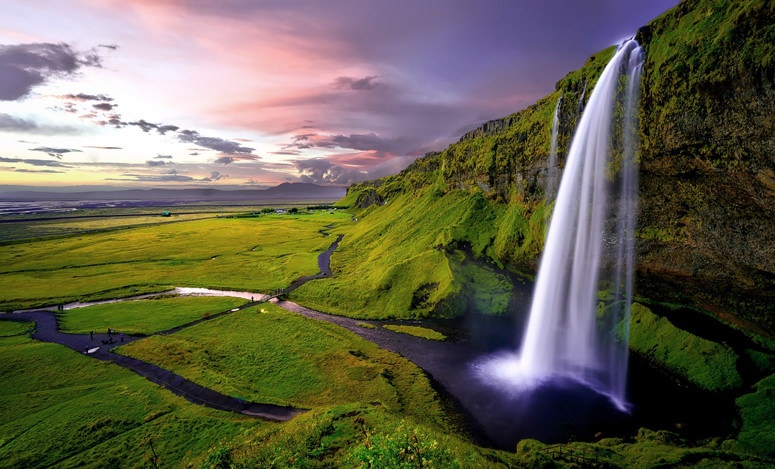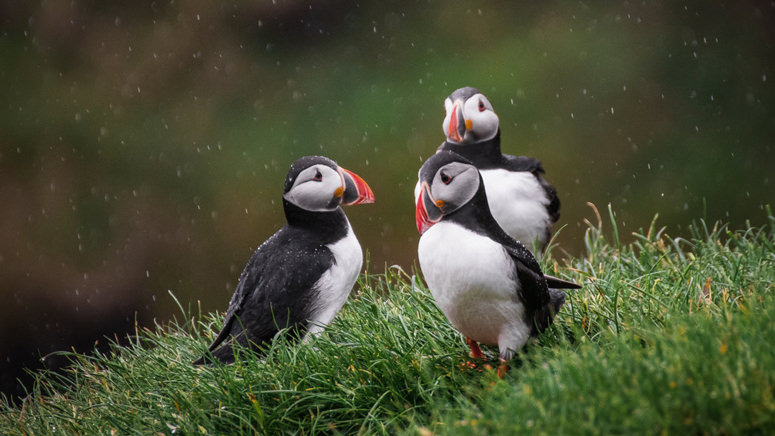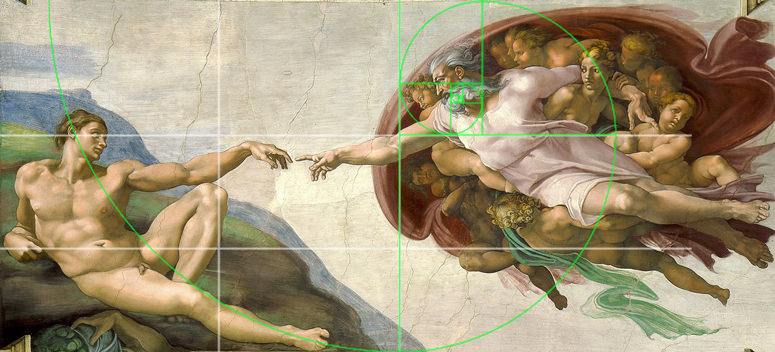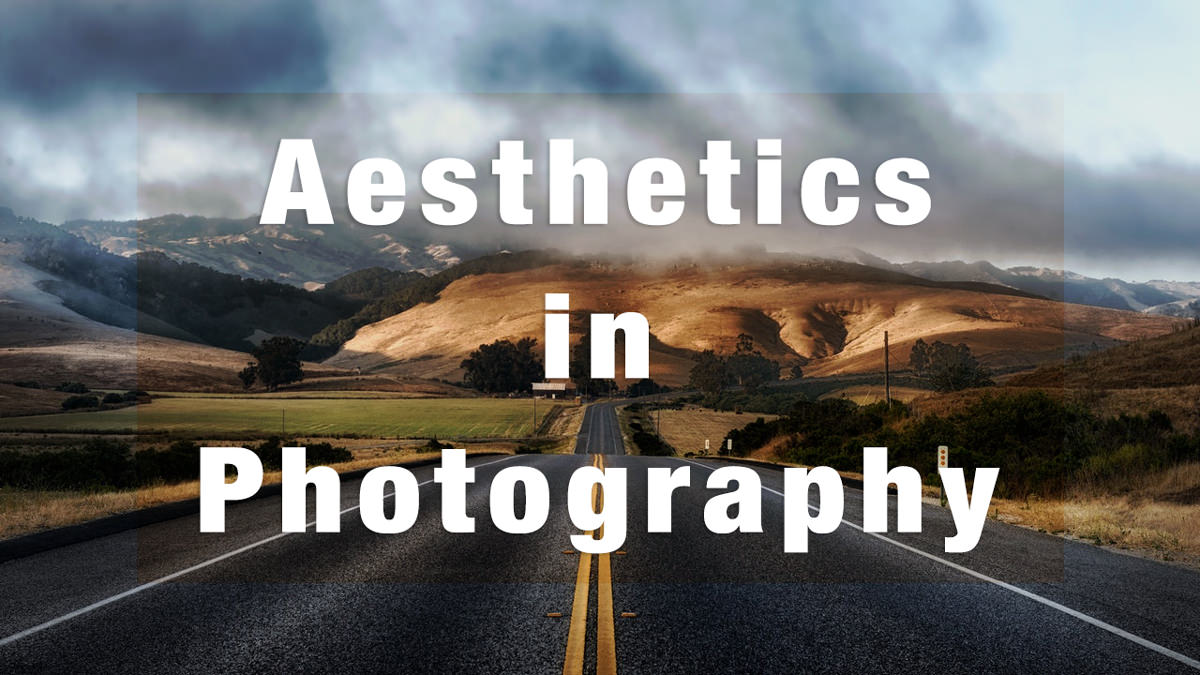Last updated on December 31st, 2021
I remember when I first bought my Canon Rebel T5i DSLR and started photographing. I mainly used it for travel photography during by time abroad in countries like Cuba, Colombia and Iceland.
I was a bit overwhelmed by all the functions on a camera. I had no idea how to use it, let alone understand aesthetic photography. I invested about $50 for an in-class, group lesson on the fundamentals of a DSLR and never looked back.
After using my beginner DSLR to take photos, I edited them in Lightroom. At the time, I thought I was competent in post-processing images. I quickly realized, I overcooked my photos with saturation and contrast. I was a kid in an ice-cream parlor putting too many toppings on my sundae. The photos didn’t retain their natural awe. And boy did I have to learn and correct that.
But the main reason I bought a camera, and went into photography as a hobby, was because of how magical landscape photos appeared to me—especially HDR photography. I was like, I can do that too.
Today, photography is important, and it’s more than point-and-shoot. It involves making a photograph aesthetic. But this practice doesn’t only apply to professional photographers. Amateurs with a DSLR, or even a camera phone, put effort into making an image worth sharing.
Aesthetic TechniquesComposition
Photo Editors
Conclusion
What is Aesthetics in Photography?
In simple terms, aesthetics in photography means the image looks graceful or pleasing. But it’s more than that. An aesthetic image forces the viewer to wonder and brings emotion. The mind not only views the photos—but pauses—and marvels.
Of course, each individual views a photograph differently. The cliché, beauty is in the eye of the beholder, holds true here. People view, analyze and interpret images based on their standards. You might even say people have a predisposition bias towards what is considered beautiful from past experiences.
Some people may prefer black-and-white (monochrome) photos while others love colorful and vibrant images. Different genres of photography are a good thing. It makes this hobby and profession exciting. Furthermore, it gives photographers ample opportunity for something to capture without the field becoming lackluster.

Why Care About Aesthetics?
Contrary to what some people may say, photography is an art. It’s meant to be appreciated through the work of photographers. But in order for that to happen, the final product needs to be appealing to wandering eyes. There’s also a branch of photography called fine art.
Aesthetics doesn’t only apply in photography, it occurs every day in human life: architecture, food, modelling, nature, gardening, automobiles, etc.
Without trying to achieve beauty, we would be stuck in pre-historic times, with no standards. We all have a fashion style, try to make ours homes look neat, and prepare our meals in a particular way that makes it appealing to eat. Though it may be wrong, even a job interview expects the participants to dress in a particular way. I’m not trying to say we need to have unattainable beauty, but rather something modest.
How to Apply Aesthetic Photography Techniques
When you want to take an eye-catching photograph, there are a few things to consider like equipment and composition.
I’ll be discussing some of the critical factors to making a photo aesthetic. But as I mentioned earlier, people perceive photographs in different ways. Not everyone is going to like your images. And that’s okay, because you’ll appreciate the art more when people do love your photographs.
Equipment
You can’t take a photograph without a camera and lens. Nearly everyone in a developed country has camera. It’s usually in the form of a smartphone.
Camera phones have come a long way since they were introduced to the public about 20 years. Their mobility and convenience make them the number one device for photographing. And yes, taking aesthetics photos with an iPhone or Android is more than possible.
There are professional photographers that exclusively use a smartphone, mainly because it is their niche and market focus point.
I do not want to take away from the great tool a camera phone is, but they do have limitations. That limitation is mainly the size of the image sensor, which impacts picture quality and retained image data. Picture quality is important when you are post-processing in an image editor, blowing up the image to display online, or printing. And though you can attach a zoom lens to a smartphone, it’s needless to say that the lens is sub-par compared to standard camera system lenses.
If you are a photography enthusiast, you’ll still be better off with an entry-level camera and lens than a smartphone. If you want to take it to the next level, a full-frame camera will provide you the best aesthetic images.
Camera lenses play a vital part.
If you want to photograph landscapes, then you’ll need a wide-angle lens. These lenses are able to capture an expanded area from left to right along the horizon.
A telephoto lens will be required for wildlife, action sports, and any subject in the distance.
If you’re into photographing insects or anything close-up, then a macro lens will be needed. But you can sometimes get away with using standard-zoom lens depending on how infinitesimal you want to capture.
And one last thought about equipment, a camera is only as good as its photographer. There is no need to spend money on a camera and lens if it is outside your budget.
Subject
What are you shooting?
Every image that is captured has a purpose. To tell a story. To change a mood.
The subject of a photograph is the focal point. It’s where the eyes should be focusing on the most. As a photographer, you want to compose the image in way to draw the eyes in.
Every image needs a subject: person, food, mountains, sunset, etc.
An image without a subject is bland. It has no point. For example, if you only photograph a blue sky, is it really an image a person would admire. Is it aesthetic enough to share on social media? Probably not.
There are some situations where individuals photograph only a blue sky, maybe with a few clouds, or something with no subject. A case like this would be for stock photos or to use the image as part of a composite image.
There can also be multiple subjects in a story; or one main subject with several not-prominent subjects. This skill in photography is used to tell a story, or to make the viewer figure out what’s happening.
Lighting
The lighting or exposure of a scene needs to be considered.
Unpleasant photos with poor light have underexposed or overexposed areas. A common situation like this arises during the twilight hours—when the sun is rising or setting—often the sun is blown out or the shadows are too dark. Fortunately, this can often be corrected in post-processing.
Focus
Blurry images are a common problem in photography. It happens for several reasons including poor equipment, hand shake, moving subject, out of focus, etc.
Generally, a camera can only focus on a specific area: the perpendicular plane in front of it. But the area of focus can be expanded by adjusting the focal length and aperture.
You’ll want to make sure your subject is always in focus. A technique used to draw the viewer’s eyes in is shallow depth of field. This makes the subject in focus while everything else is blurry. This can be achieved by using a wide aperture and extended zoom lens.
Similar to correcting exposure in post-processing, the sharpness of an image can be adjusted in a post-processing software like Topaz Sharpen AI. Additionally, you can make parts of an image blurry. Photoshop and Topaz Studio have great blur tools.
Colors
Vibrant colors makes a photograph aesthetic. They bring attention to it because humans are accustomed to disregard natural colors or dark shades like white, black, navy blue, etc.
Cameras can’t always render the saturation of colors correctly. Therefore, we have to correct it in post. Be careful when you are adjusting saturation in a photo-editing software. Beginners and over-the-top photographers add way too much saturation. The image will look cooked. This was one problem I had.
A software that does color grading exceptionally well is Capture One. You can read my review to find out more.
Unfortunately, some people are color blind, also known as color vision deficiency. It decreases the ability to see color or differences in color. 1 in 12 men are color blind, whereas it’s 1 in 200 for women. Explaining how they see life and photography is beyond my expertise. But you can watch this video to find out more.
Black and White
Monochrome photography was initially a technical limitation. But now aesthetic black and white photography is a genre.
But why do people gravitate towards this technique when either photographing or displaying the final image without color.
Well, as related to the previous section, it’ll look better to individuals that are color blind.
But there are more reasons to aesthetic black and white photography. Color can be distracting. Removing it puts emphasis on the subject and mood of the image. Natural light can seem more illuminating without color. Shadows give off dark vibes. There’s a classic feel to them. Shapes within an image are more noticeable.
Black and white photography is still a thing. Even the most famous photographers in history—alive or dead—only photographed without color.
Composition
Composition in aesthetic photography is a crucial aspect that often defines a photo. This is how the image is framed before the shutter button is pressed.
There are some obvious situations where you have a general idea of the composition. For example, when you’re photographing the sunset, you’re not going to want to have the horizon at the top 10% of the image in most cases.
Understanding the rules of composition will help you capture more engaging photographs.
Symmetry and Avoiding It
A novice photographer’s strategy is to compose an image symmetrically: centering your subject. Though this seems reasonable at first, and works with portraits, it regularly lacks excitement.
The better technique is to make the image asymmetrical. It adds a bit more mystery.

Rule of Thirds
The rule of thirds may be the most common composition. It’s easy to remember, helps break symmetry, and easy to use in wide-angle photographs. Many cameras also display the rule-of-thirds grid in the viewfinder.
The idea is to break the photograph into 9 equally space rectangles by using 4 lines. You place your subject(s) along the lines or intersections. Placement doesn’t need to be exact. For landscape photography, the horizon is placed on one of the horizontal lines.

Leading Lines
Lead lines helps the eyes follow the story of an image. For this reason, it can also be called leading eyes.
Lines are everywhere in our world. Roads, trails, buildings, and stairs all have leading lines. Often times you’ll photograph leading lines without realizing. But you should keep an eye out for them and add them to your arsenal.

Triangle
Like the lines in our world, there are many shapes including triangles.
Triangles are formed in composition naturally or by combing lines through points of interest.
The triangle composition gives the eyes a few areas or subjects to wander.

Rule of Odds
The rule of odds in photography states that you should have an odd number of subjects in an image. This is opposed to having an even number of subjects which is visually less appealing.
I think the rules of odds is appealing because there will be centered subject in some situations. Whereas, with an even number, there can’t be a centered subject. An example of this in nature is a mother bear with her two cubs.

Golden Ratio
Now we get into a more complicated composition. I introduce you to the golden ratio (golden spiral, golden mean, golden section). It’s easy to visualize or see it applied on a photo, but there is a mathematic equation to it.
Let me try to elaborate and make sense of the golden ratio in layman’s terms.
The golden ratio, also known as the Fibonacci Spiral named after mathematician Leonard Fibonacci and the Fibonacci Series, is a ratio that is 1 to 1.618 or a/b = (a+b)/a = 1.618.

The golden ratio occurs naturally in biology and is considered the best composition method by some photographers.
The phi grid is used to help visualize the golden ratio. The grid looks similar to the rule of thirds.
You can also watch this video for more information on the golden ratio and how it’s calculated.
Perspective
Composition and perspective work together to affect a viewer’s perception of an image.
Perspective is defined as the spatial relationship between objects in an image or our point of view.
A famous example of perspective is people holding up the Leaning Tower of Pisa.
Editorial Photos
Editorial photos don’t require following composition techniques. They’re mainly used to provide proof or visualize news. As long as the story is portrayed cleanly in the image, then the photo being appealing isn’t a big deal.
Photojournalists may use composition or the other aesthetic techniques to make the photos more pleasing, but is not required.
Aesthetic Instagram Pictures
I used to post frequently on Instagram, especially during my long-term travel days throughout Latin America and Southeast Asia. But since then, I’ve been trying to spend less time looking at my smartphone and social media channels. Plus, I have other works that keep me busy from posting frequently.
The main reason users want their Instagram profile, photos and stories aesthetic is to get more followers and increase engagement.
How to Make Your Instagram Aesthetic
Let’s start with your Instagram profile picture. The photo should be consistent with the rest of your profile in terms of color and mood. If the account is a business account, then you may want to display the brand logo. Otherwise, a face picture would suffice.
The profile picture should also be cropped accordingly so that users can easily identify the image.
More importantly, the profile picture should relate to your recent stream. If you’re posting photos during the winter season, don’t have a profile picture from the summer.

The Instagram pictures take up the most real estate space on your profile. You’ll want to post pictures that are consistent in color and style. Don’t have an account about food then start posting landscape photos. Keep it steady. Many influencers stick to using one or two filters to keep the Instagram profile aesthetic.
It’s also best practice to keep the highlight covers the same style. It’s more receptive by potential followers.
For Instagram stories, you can get away with consistency. This is because stories require users to click on them before they’re seen. Of course, you don’t want to go way off from your original style. You’ll still want to share stories related to the reason why users followed you in the first place.
If you want to take it a step further and have consistent and aesthetic Instagram stories, then I recommend using Photoshop PSD templates that are specifically made for them. They cost money but are sometimes available for free. You’ll need a computer with Photoshop CC installed.
Many Instagrammers use Lightroom for their photo editing needs. Lightroom also has presets that you can install on your mobile app without a computer.
Aesthetic Selfie Ideas
Now we move away from professional photography and get into the self-obsessed trend of the selfie. With the invention of the front camera on a smartphone, users can take pictures of themselves without assistance.
Some composition rules can still apply in selfies. If you were taking a selfie with a group of friends, the rule of odds would fit.
Here are some aesthetic selfie ideas that are Instagram worthy:
- Have partial direct sunlight shine on your face.
- Don’t go overboard with the tacky emojis or facial retouching.
- Use a prop such as bubble gum or a lollipop.
- Avoid flash when possible.
- Show off the smile.
- Use your best angle.
- Remove distracting objects from the background.
- Don’t overcook your selfie with editing.
- Try to keep a consistent style or theme.
- Don’t be an instant loser by sticking out your middle finger.
- For aesthetic mirror selfies, don’t cover your face unless you want to be mysterious or hide your identity on Tinder.
Also, check out these mirror selfie poses to get you going.
The most important tip—don’t take selfies with wildlife through so-called sanctuaries or zoos for social media exposure, especially endangered animals. It doesn’t help the cause and promotes unsustainable wildlife tourism. Respect the cause.
Now that you have a better idea on how to take aesthetic photos of yourself, don’t stress too much about them—it’s not worth it.
Aesthetic Photo Editors
If you’re looking for an aesthetic photo editor, they’re not hard to find. Many image editing software are more than able to produce beautiful photos.
Some of the image editing applications will require time to learn, others can be used easily by a beginner.
Here is a list of desktop and laptop photo editors that are able to produce gorgeous pictures:
Here are some aesthetic photo editor apps for your iOS or Android device:
- Lightroom Mobile
- Photoshop Express
- Canva
- Snapseed – Android/iOS
- VSCO
- Prisma
- Bazaart
- Facetune
- Photo Lab
- Filterra
- Peachy – iOS
Conclusion
Making a photo aesthetic sometimes involves being in the right place at the right. But most of us have to put in some hard work into our photography workflow. Whether it be staying up all night to get that perfect shot of our galaxy or playing with angles to make sure the perspective is right, it takes time, practice, and dedication.
Your photos aren’t going to inspire everyone. That’s okay. Even photo competitions have subjective rules and judges on what’s acceptable and aesthetic.
I mentioned many rules or tips on getting that exquisite photograph. But the most important rule is to break them—and experiment.


I don’t see the name of the author of this beautiful and knowledgeable piece of writing. But I must say I have loved it. You have my ‘thank you’. It was wonderful, I learnt many points that were important and I would always wonder if I could find some related stuff anywhere and today I got it. Thank you so much!